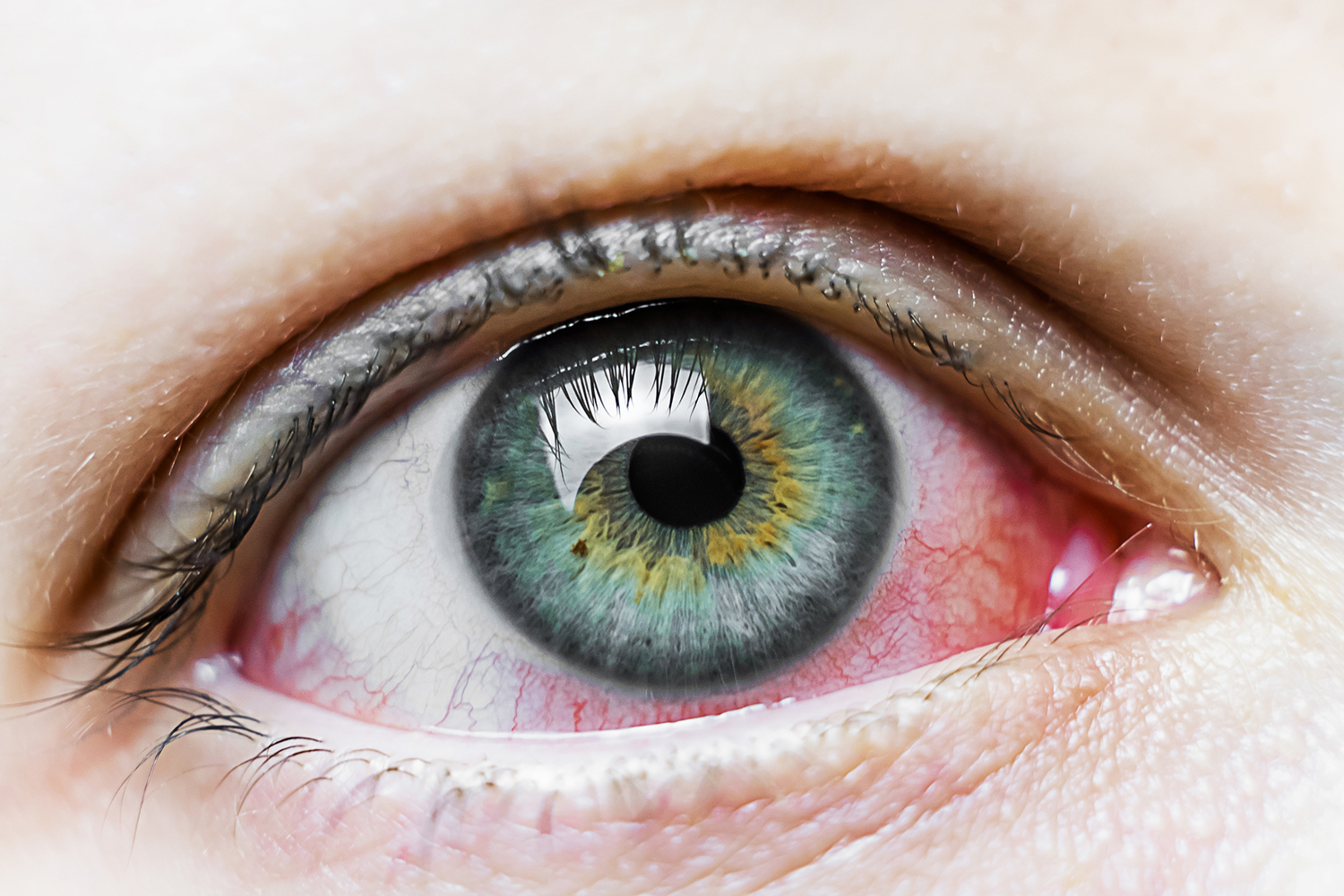What is Conjunctivitis?
Often called "pink eye" or "red eye," conjunctivitis is a painful and/or itchy redness of the whites of one's eyes.
This is different from bleeding into the white part of one eye, called a "subconjunctival hemorrhage," which leaves part of one eye bright red, but causes no discomfort or vision change.
Though conjunctivitis looks nasty, this goes away on its own and is not dangerous.
Potential Causes
It is most commonly due to an allergic reaction or an infection (usually bacterial, but sometimes viral).
It is more common in diabetes and high blood pressure (so check for these if it happens), but most often happens in healthy people.
-
Acute Allergies
Itching is the dominant symptom. It is more likely to affect both eyes, and the discharge/watering from the eyes is usually clear.
It may hit suddenly, or be mild and ongoing.
-
Viral Infection
Though there may be some itchiness, the pain, mild redness (more pink) and watering are more prominent.
It may start in one eye, but easily can spread to the other (so be careful not to touch the unaffected eye). The discharge is usually clear and watery.
It may take three weeks to resolve and may occur along with a respiratory infection or cold.
-
Bacterial Infection
This is associated with a puss-like yellow-green mucus discharge along with pain.
-
Toxic Exposure
From an acute chemical exposure (usually obvious and should be immediately treated).
-
Irritation of the Eye
Falling asleep with your contact lenses in or having inadequate tears to support the use of contact lenses.
Diagnosis
Though the viral and allergic conjunctivitis tend to be benign and resolve on their own, it is best to see an eye doctor to rule out bacterial conjunctivitis or more dangerous viral infections of the cornea.
Seeing an eye doctor is especially important if you have yellow discharge, severe pain, or light sensitivity in the eye, or the pupil (black part of the eye) is irregularly shaped instead of round.
Treatment
-
Recommended Supplements
-
Methylsulfonylmethane (MSM)
For long-term allergic conjunctivitis, treating allergies with the supplement MSM 3,000+ milligrams (mg) a day can be helpful over time.
-
Eye Drops with Vitamin A
For contact lens and dry eye induced conjunctivitis, using special eye drops containing vitamin A can be very helpful over time.
-
-
Other Therapies & Advice
-
Acupuncture
A special acupressure technique called NAET (see www.NAET.com) can be helpful, but it can take a while to work.
-
Cool Compresses
Once the eye doctor has ruled out and treated more worrisome causes, treatment is for symptom relief. Cool compresses or rinses can help itching and warm compresses help pain.
If only one eye is involved, be sure to tilt your head to the side so the affected eye is lower than the healthy eye. Otherwise, if water flows from the infected eye to the other eye, it may also get infected.
-
Antihistamines
Antihistamines can also help with itching. Benadryl (the over-the-counter medication diphenhydramine), which is sedating, is best at night so you can sleep. A nonsedating antihistamine is best during the day (e.g., Claritin or Zyrtec).
-
More Information Online
- NAET (acupressure technique for treating food allergies)
- Viva Eye Drops (at WebMD.com)




